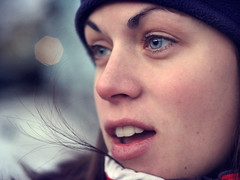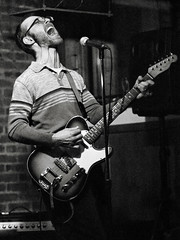Archive of
week 16 interview.
Please welcome our Week 16 featured Artist,
Emaitchess.
1) How did you first get into photography and what was your first real camera?I was born in Australia in 1963. When I was a young child my family left for the UK. We travelled often, and my parents took a lot of slides with a Voigtlander which they were very proud of. As a young child I was fascinated by this camera - I loved the dials around the lens, the cool smooth sheen of the metal case, and especially the strange yellow ghost in the rangefinder. I even loved the smell of the leather case! I often pestered them to let me take pictures with it. We didn't own a projector, but would look at the slides together through an illuminated handheld slide viewer. I became very conscious of how emotionally powerful photographic images can be; many of those early family images have become almost talismanic ... images of memories, or memories of images...
The first camera of my own was a Kodak Instamatic, which my parents gave me shortly before we left the UK in 1970. The Instamatic used the Kodak 126 format: square images on 35mm film which came in a cartridge. I can still remember getting the first packet of pictures back from the chemist. I was 7, and still have an almost visceral memory of the crushing disappointment of the many blurred and out-of-focus images ... and of the electric thrill of the one or two that worked! I have a couple of images from that first roll in my flickr stream (eg:
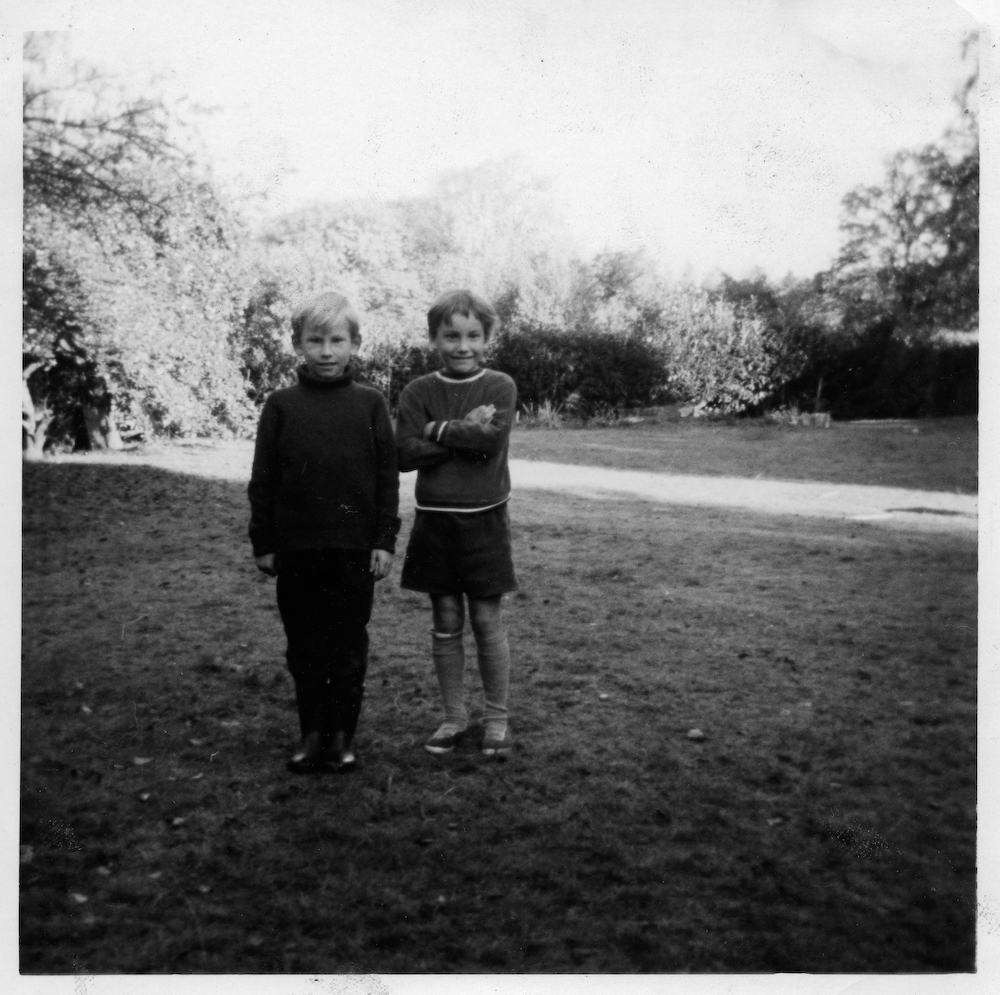
).
Not long after we returned to Australia, an uncle gave me a box full of old darkroom gear. By the age of 10, I was developing my own B&W films, and printing onto printing-out-paper.
My first SLR was a Canon TLb, which I bought second hand with my paper round money. I was 14, and passionate about photography ... it was what I wanted to do when I grew up.
2) Where do you live now and how does your photography reflect your environmental surroundings?I live in an inner-city suburb of Melbourne; it is a very beautiful, gentrified area, with lots of renovated Victorian & Edwardian houses which sell for absurd amounts of money.
I'm not sure that my photography really reflects my environment at all. I think my pictures are very interior ... concerned more with my relationship with myself - and the relationship my subject has with herself or himself - than the relationship of either of us with our surroundings. Perhaps you could argue that that sort of introspection is a luxury afforded by a comfortable middle-class environment. It can be a little intense ... I suppose I should get my camera out of the house more!
3) This set titled Effluxion of Time where you photographed someone 25 years ago and then again in 2008 is really inspiring. Tell us a bit about it.Thank you – that is a great compliment! I love the idea that my pictures might be inspiring.
At the age of 20, photography was still what I wanted to do when I grew up. I got into the photography course at Prahran College in Melbourne. This was the art school where many great Australian photographers studied (Bill Henson, Carol Jerrems, Chris Koller, Polly Borland, Peter Milne, Leah King-Smith). It was a very exciting, creative and challenging school. I loved it. I was one of the younger students in my year, and I fancied myself as a bit of a star. I think I was probably a complete pain in the arse… The 1984 images from The Effluxion of Time project were all taken for Prahran College folios.
Halfway through second year, in the fog of a drug-fuelled despond, I let the course fall apart. I dropped out, and in a few years had sold my cameras, and lost touch with serious photography.
I recovered psychologically, but pursued different paths. First, I washed dishes, conducted trams, and cooked tacos. Then I became a lawyer!
I bought a digital SLR in late 2006 to photograph my young son, Arlo. To my astonishment, in using it I rediscovered my original passion for photography, and since then, I have been intensely absorbed (once again) by looking at, reading and thinking about, and making photographs. Flickr has been a big part of this rebirth.
I started the Effluxion project to give me something focus on as I got back into photography. The project, though, became really quite profound (for me anyway!). I realized the project was really autobiographical, and is concerned with my own relationship with photography, and of the various choices I had made (or had failed to make) and which had led me to the middle of my life.
The 1980s pictures (which are all of my friends from the time) had haunted me for a long time – like the talismanic Kodachromes of my early childhood, these were images that gave me a memory … a memory of myself when I thought I might be an artist, and not a corporate lawyer. In photographing my friends again, I feel I have started to deal with the sadness I feel about some of the life choices I have made.
At the same time, though, the project did become very emotionally complex. Not many of my friends were happy with the images, and some were profoundly unhappy. Trying to navigate the ethical questions has been very difficult, and possibly that journey is still unresolved.
Earlier this year I had a solo exhibition of these images, which was a really exciting and rewarding experience.
4) I feel like some of them got better looking..do you attribute that to the awkwardness of youth? or are you just that good a photographer?Apart from the subjects themselves, many people have made that comment. I think it probably reflects a few things: firstly, the photographer in the 1980s images was trying very hard to be dramatic and provocative; whereas the older photographer probably has a more nuanced vision. It may sound ironic, as the pictures are obviously not necessarily flattering, but I think the recent images are more respectful. There is obviously also an awkward (though beautiful) hubris to the youthful subjects. But I think, generally, people just become more complex, rich and interesting as they get older.
5) Did you know at the time what you were doing? That you would revisit it in 25 years? Did anyone pass away that you couldn't photograph again?When I was 20, it never occurred to me that one day I would be 45! Some people have compared this to a “Seven Up” type project, but that has never been my intention. It might be interesting to photograph these people again in another 20 odd years, though. Assuming any of them ever let me near them with a camera again!
I am still pursuing several of my old friends to photograph them for the project. Some live overseas. Others just won’t return my calls!
Sadly, a couple of people I photographed in the 80s have died. Vale Jane [
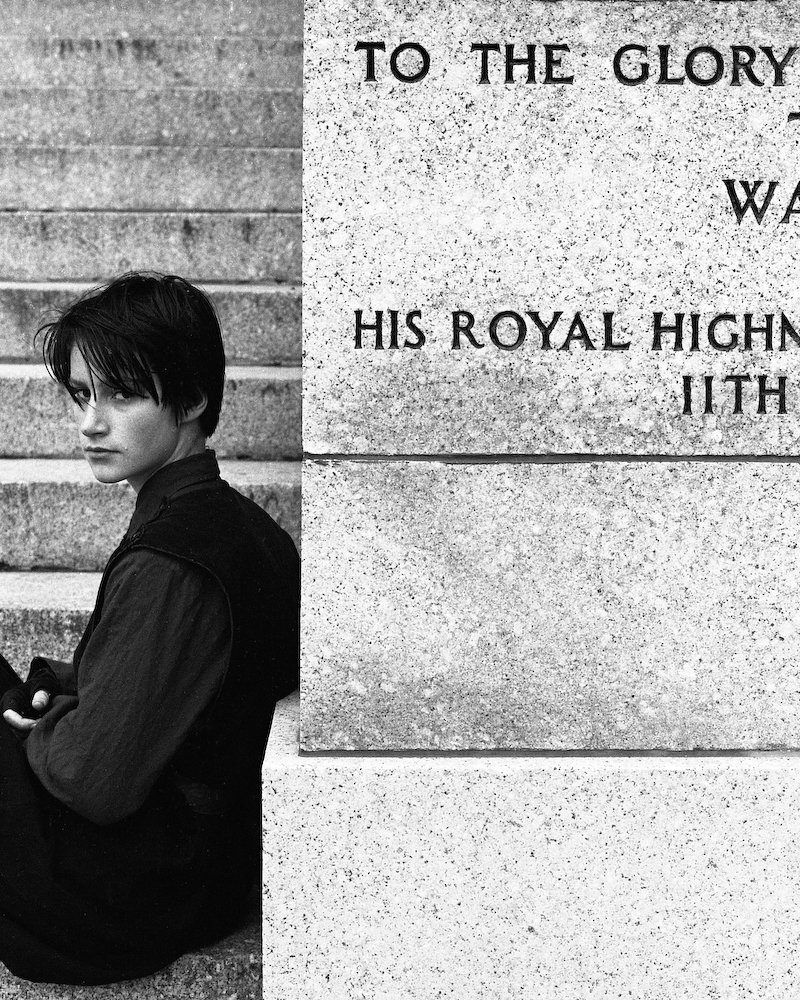
] and Tom [
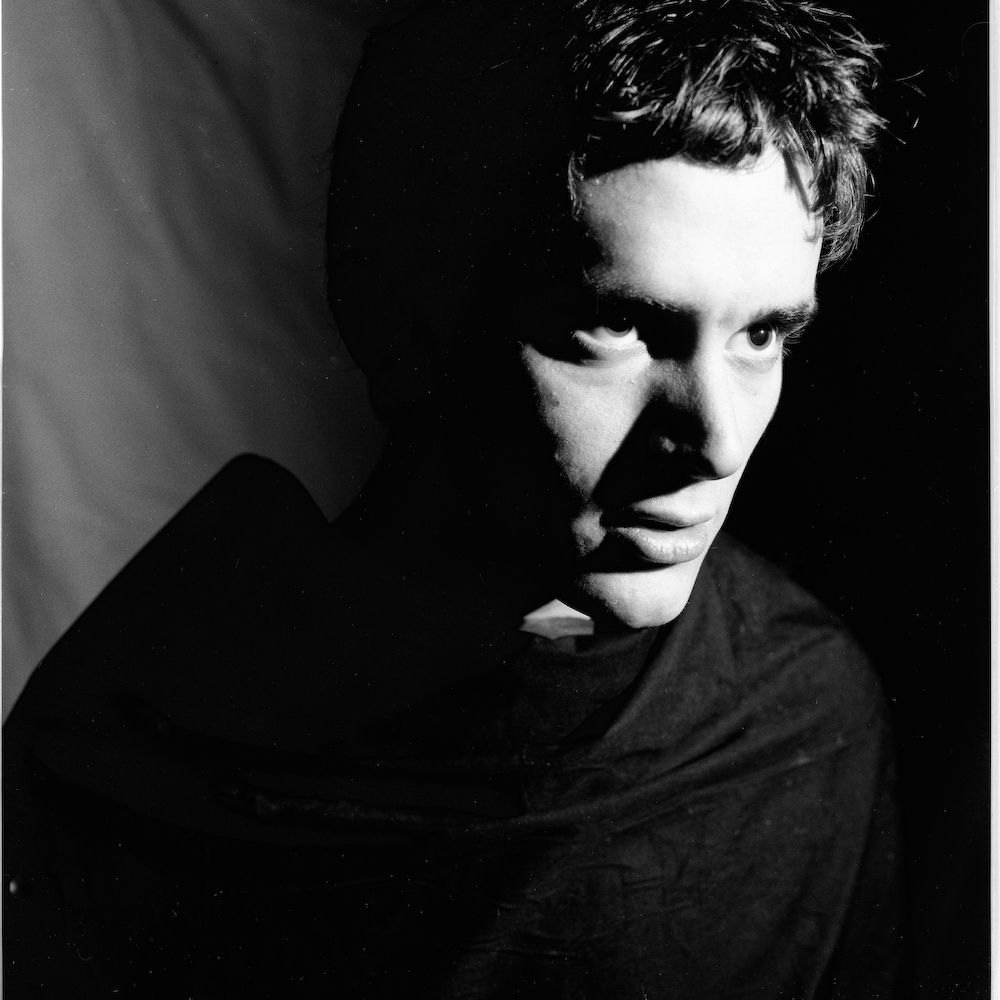
]…
6) In this portrait, the Depth of Field seems very sharp on his face, and then falls off drastically to his body. Did you manipulate it at all or was it the lens you were using?I used a large format (5x4) view camera and tilted the lens panel. This rotates the plane of focus from parallel with the film, and allowed me to shoot at f.22 (to keep his whole face sharp) but to blur the rest of the image. The view camera is very interesting for many reasons, but I think that the ability to move the focal plane is particularly intriguing – it can get gimmicky very quickly, but used carefully, I think it can be very powerful.
7) What is your camera of choice for portrait work?For the formal, studio-based portraits, I use a Mamiya RB67, and the 5x4 view camera. I will normally shoot several rolls with the RB, and then finish the session with a few sheets using the LF camera. Sometimes I work with the RB handheld (with a grip) – it weighs a ton, but it can be quite interesting to move around the person a little.
8) How do you get the emotion you want from your models?My photo sessions are generally very quiet. We will often have a conversation while shooting that has nothing to do with the pictures. Sometimes I ask the subject to recall a particular memory. Another technique is to ask them to think of the camera as a mirror, and just to contemplate their reflection.
When I was 20. and an arrogant shit, I tried a more confrontational approach to provoke emotion. I photographed Jacinta [

] in 1984 and made her cry. I was wracked with shame about that for two decades! I got back in touch with her last year and was delighted that she allowed me to redeem myself!
9) Show us your favorite portrait that wasn't chosen for Spotlight Seven.That is such a hard question... I do love this picture of my wife:
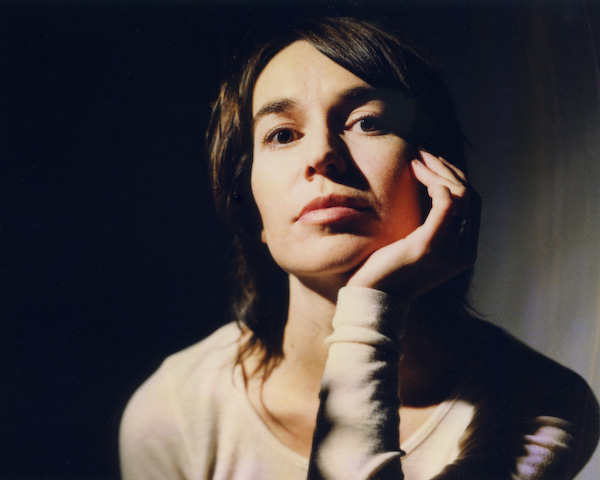 10) Show us a photograph on flickr you wish you took.
10) Show us a photograph on flickr you wish you took.Flickr is full of photographs I wish I had taken! There a many incredible photographers posting here, it seems unfair to single one out. But since you asked… I love this image by .severine [http://www.flickr.com/photos/natur_elle/] :
www.flickr.com/photos/natur_elle/1535239454/The 10 photos chosen from Emaitchess:
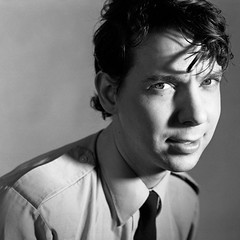


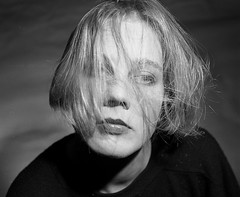


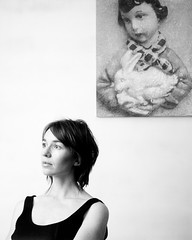
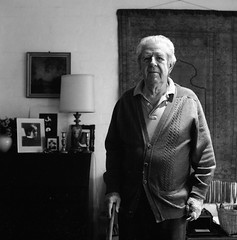

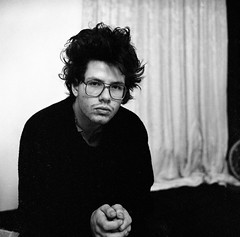




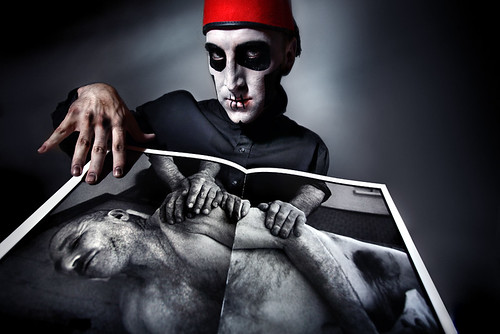
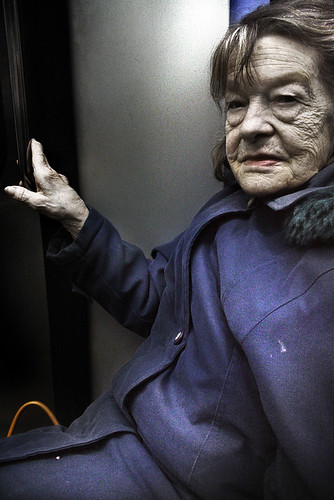
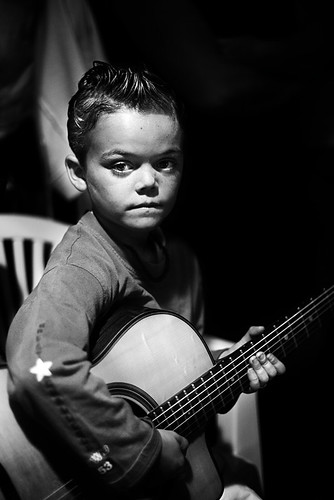


























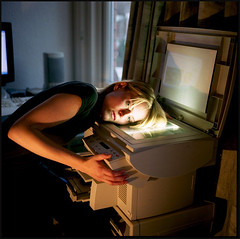
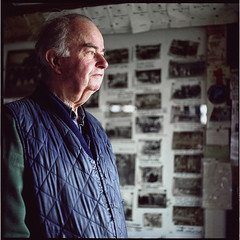


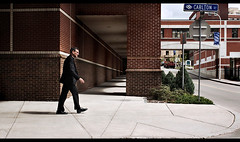




![Steve [Orv Nebby]](http://farm4.static.flickr.com/3161/2412902582_16769e813b_m.jpg)
